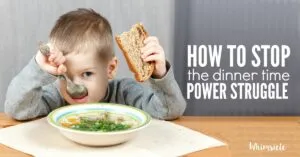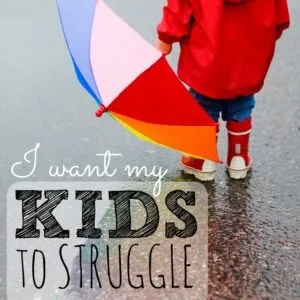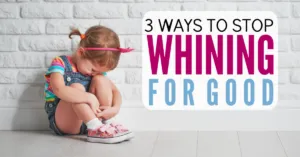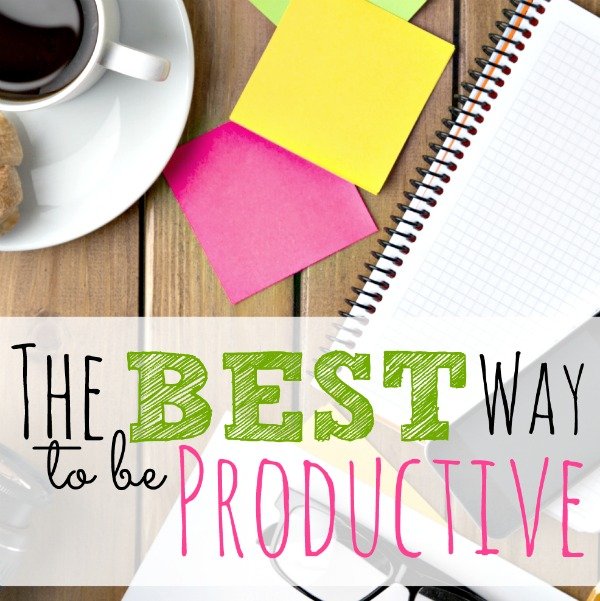Stop Fighting with Kids: 3 Steps to Make power struggles disappear
Why is your child constantly defying you? You’ve been engaged in a constant power struggle with no end in sight. These parenting tips show you how you’ll end it.
You’ve just spent the last 30 minutes straightening up your preschooler’s room.
Placing stuffed animals along the pillows…
Separating out the toys that she never plays with – the wooden puzzles with missing pieces, dolls she forgot – and place them all in a box in the center of the room.
Briefly, you leave the room to check on something in the kitchen.
You walk back in to find that your four-year-old has emptied the entire box and is stuffing everything back in her closet.
What in the world?!?
You want to scream. You want to cry. The last 30-minutes of your life spent cleaning her room is now entirely wasted.
With no clue how to handle this, you yell.
She yells back.
And yet, situations like these keep happening.
How can you avoid this constant fighting with your child?
You’re in a power struggle
Your child isn’t intending to be deliberately naughty or wanting to undo your hard work.
She wants attention.
… and is seeking it in the most maddeningly, unproductive way possible.
Her attention seeking ways may be due to a number of situations that are completely beyond your control:
- A younger sibling needing your time and attention
- A parent traveling and out of town
- Work issues that need your attention.
Instead of logically explaining to us how they would like more of our time, our kids resort to guerilla war tactics.
It’s all they know.
Think about it. By messing up your work and putting all the toys back, she:
- Got your undivided attention
- Gained control back of the situation
These power struggles can be super difficult because your child doesn’t want to give in and you don’t want her to “get away with” bad behavior, so you reach an impasse.
Unless, you resort to some psychological guerilla warfare tactics of your own…
Read: 6 Positive Discipline Steps That Will Change Your Child’s Behavior
Don’t worry, these tactics will:
- Strengthen your relationship with your child
- Minimize hurt feelings
- Have the behavior less likely to occur in the future
You in? Here’s what we’ll do:
Step 1: Diffuse the situation
As soon as you walk into the room and see your child has messed up your work, you freeze.
Your child sees you and she gears up for a fight. She knows how this has gone in the past and what’s coming.
So, she tenses up.
But you, you’re going to surprise her.
(Might need to take a deep breath here, because this will go completely against your automatic response.)
Ready?
Keep your tone light and playful.
“Oh my goodness,” you start “what are you doing? You are so silly!!!”
Giggle. Go in and tickle her. Make sure you’re laughing.
Once she’s laughing, sit on the floor and bring her over to sit on your lap by the box she just emptied.
She got her attention. But she is far from off the hook…
Step 2: Explain your feelings
FYI: This post contains affiliate links to products I love and recommend. It costs you nothing extra if you purchase through my link, but I may get a small commission
Switch your tone to one that’s a touch more serious.
“You know,” you start, “I worked really hard to make sure you had a clean room. It makes me feel sad that you emptied that box”
Keep your explanation to 1-2 sentences. Super short.
According to the book, How to Talk So Kids Will Listen & Listen So Kids Will Talk, kids tends to tune parents out during our long explanations. Short and direct works best.
Depending on your child, she might do one of two things:
- Apologize
- Defend her behavior and her actions to the death
If it’s the latter, know that you don’t owe her any more of an explanation. A good rule I employ when disciplining any child is “Don’t engage”
Stick to the facts.
She hurt your feelings when she undid your hard work. Before she can fight you anymore on it…
Step 3: Offer her a do-over
Many times, punishment isn’t necessary. We simply need to give our kids a chance to make it right.
Read: 5 Alternatives to Timeout that you can use immediately for discipline!
A do-over also works well because we give them the opportunity to act out a positive character trait.
In this situation, you can say:
“I know how helpful and responsible you can be. Let’s make this right and help me put all the toys back in the box.”
Then, without further explanation, start putting back the toys she stuffed into her closet.
It seems completely unfair that you have to do this job AGAIN, but she needs you as a model for how to start.
You’ve completely diffused the situation, so at this point she probably sees no need to stand her ground.
Since she still has your full attention, most likely she’ll join in pretty quickly.
Eliminating the power struggle
Yes, this might seem completely counterintuitive to how you handle your child’s behavior right now.
By diffusing the situation, explaining your feelings and then offering a do-over, not only will you have the best chance for cooperation, but you also model the appropriate behavior that you want to see in your child.





























Thanks for sharing! Diffusing the situation is the way to go. It is amazing how a laugh removes the tension.